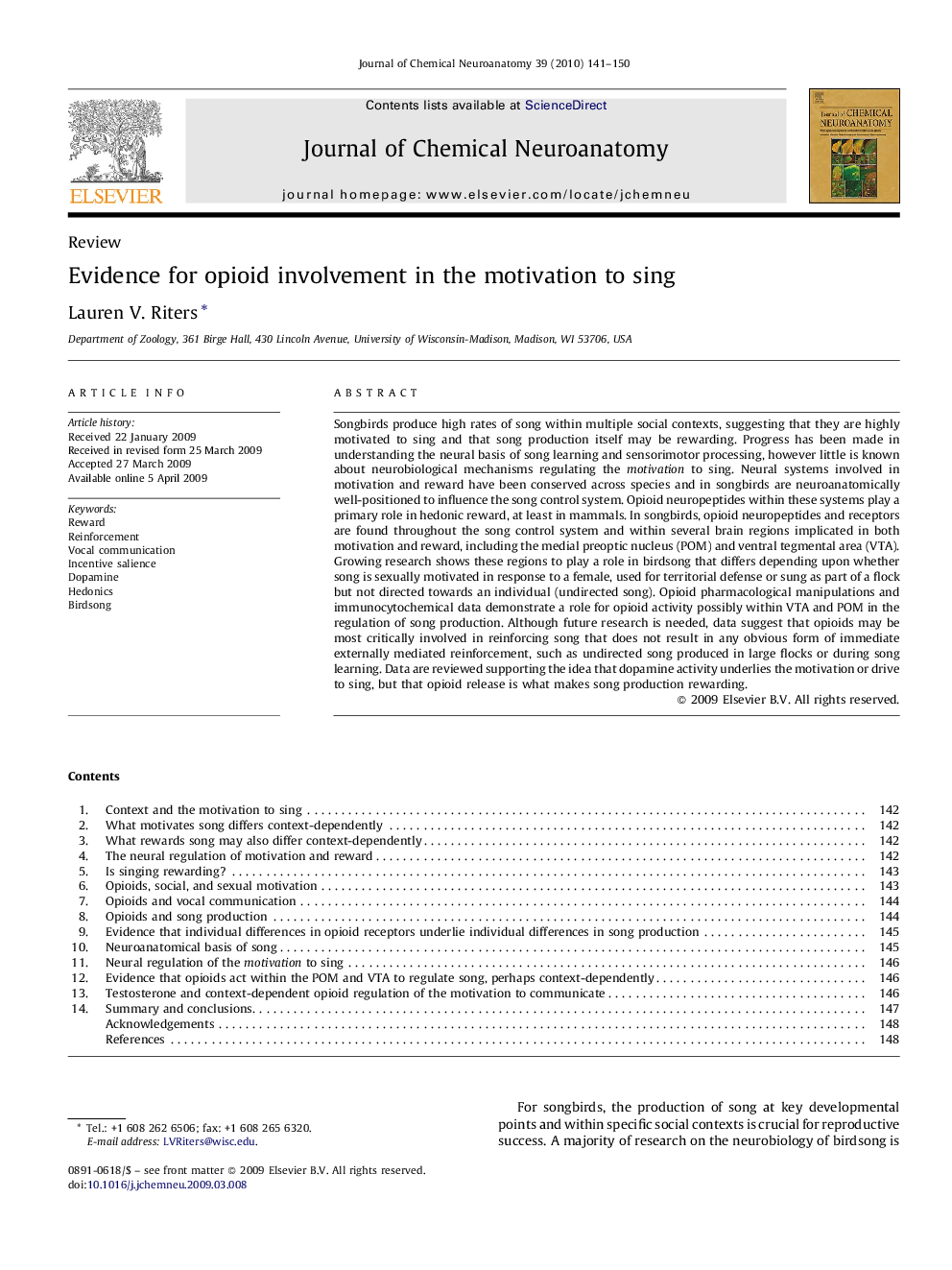| کد مقاله | کد نشریه | سال انتشار | مقاله انگلیسی | نسخه تمام متن |
|---|---|---|---|---|
| 1989175 | 1063570 | 2010 | 10 صفحه PDF | دانلود رایگان |

Songbirds produce high rates of song within multiple social contexts, suggesting that they are highly motivated to sing and that song production itself may be rewarding. Progress has been made in understanding the neural basis of song learning and sensorimotor processing, however little is known about neurobiological mechanisms regulating the motivation to sing. Neural systems involved in motivation and reward have been conserved across species and in songbirds are neuroanatomically well-positioned to influence the song control system. Opioid neuropeptides within these systems play a primary role in hedonic reward, at least in mammals. In songbirds, opioid neuropeptides and receptors are found throughout the song control system and within several brain regions implicated in both motivation and reward, including the medial preoptic nucleus (POM) and ventral tegmental area (VTA). Growing research shows these regions to play a role in birdsong that differs depending upon whether song is sexually motivated in response to a female, used for territorial defense or sung as part of a flock but not directed towards an individual (undirected song). Opioid pharmacological manipulations and immunocytochemical data demonstrate a role for opioid activity possibly within VTA and POM in the regulation of song production. Although future research is needed, data suggest that opioids may be most critically involved in reinforcing song that does not result in any obvious form of immediate externally mediated reinforcement, such as undirected song produced in large flocks or during song learning. Data are reviewed supporting the idea that dopamine activity underlies the motivation or drive to sing, but that opioid release is what makes song production rewarding.
Journal: Journal of Chemical Neuroanatomy - Volume 39, Issue 2, March 2010, Pages 141–150